Fire! Open Letter to US Treasury, Energy Secretaries on addressing the threat of forest fire via the bioeconomy
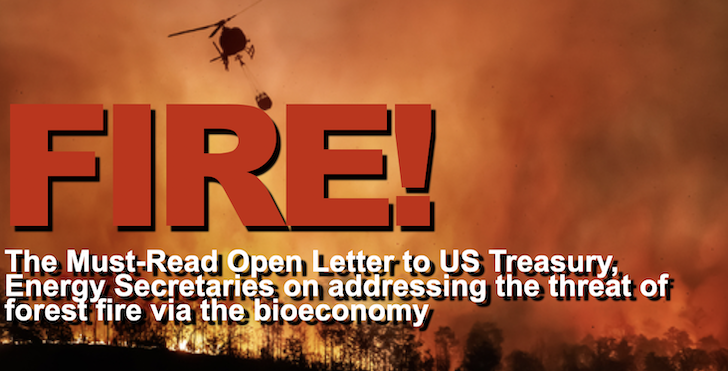
In the long term, the bioeconomy needs hydrocarbon feedstocks at 28 cents a pound or less — that’s not the raw cost of the biomass, that’s the finished cost of the hydrocarbons after excess oxygen has been blown off and the solids have been converted into workable, homogenous condition and possibly into liquids or gases.
We know this is the number, because every time the price of oil climbs to more than $100 per barrel, the world economy begins to sag, crack and tumble towards recession or worse.
For there is something more important than feedstocks that are sustainable and that is prices that are endurable.
Now, in the near-term, there will be plenty of supports in the form of carbon credits, paid by the polluters, to assist in the transition, and in the here and now of the 2020s we can count on much higher prices as the industry reaches maturity and scale — and these incentives are also intended to spur a faster conversion from fossil economy to a sustainable economy because of the data on climate change that has reached consensus (but not universal) agreement on the world stages at COP, the UN and elsewhere.
But these are temporary supports, be causer the polluter pays only so long as pollution pays, and the more there is transition, the fewer carbon credits there will be to go around, and ultimately carbon credits must sunset, because the world cannot afford to pay $100 a barrel plus hundreds of dollars per ton in carbon credits.
Which brings us to the forest, because once we have stopped by the commodity exchanges where oilseeds, grains, and waste fats and oils are priced and traded, we discover right away that commodity prices are nowhere near $0.28 per pound for these feedstocks, nor are there large bundles of alternatives that are sustainable, at sufficient scale, where the know-how and toolbox for aggregation is in existence, and the price is affordable.
Plus, the forests are on fire, and we need to manage our forest like the Scandinavians do, not as Americans and Canadians do. The smoke is going to sink us if it doesn’t kill us first.
Sustainable use of forest biomass is the subject of a letter from the AFCC — that intrepid cohort of companies and their advocates in Washington that looks after the broadest selection of alternative fuels and chemicals — and a host of companies and organizations.
It has must-read status, because climate mitigation is doomed without the forest, and the forest is doomed without climate mitigation.
December 6, 2023
Honorable Janet Yellen
Honorable Jennifer Granholm
U.S. Department of the Treasury
U.S. Department of Energy
1500 Pennsylvania Avenue, NW 1000 Independence Ave.,
Washington, D.C. 20220 S.W. Washington, D.C. 20585
CC: The Honorable Michael Regan, Administrator, U.S. Environmental Protection Agency
CC: John Podesta, Senior Advisor to the President for Clean Energy Innovation and Implementation, White House
CC: The Honorable Thomas Vilsack, Agriculture Secretary, U.S. Department of Agriculture
Submitted: Via Email
Re: Eligibility of Woody Biomass for IRA 2022 Tax Incentives for Producers: Sections 48C, 40B, 45V, 45Q, 45Z, 45X
Dear Honorable Janet Yellen and Honorable Jennifer Granholm,
We are writing as a coalition representing a broad set of interests including companies, state foresters, private landowners, and forestry and conservation groups with concerns about the negative propaganda being spread by misinformed groups regarding the use of renewable biomass such as woody biomass as feedstock for sustainable aviation biofuels, cellulosic biofuels, renewable natural gas, renewable hydrogen, renewable ammonia, and renewable chemicals and biomaterials used in biomanufacturing. These applications of renewable biomass mitigates’ emissions, lowers carbon footprints and produce sustainable biofuels and biomaterials. These misinformed groups are proposing that woody biomass should not be eligible for tax incentives such as Section 48C (30% investment tax credit) in the Inflation Reduction Act of 2022 (IRA 2022) (Ref. Treasury Guidance Document).
The IRA 2022 is a landmark United States federal law which aims to invest into domestic energy production while promoting clean energy through tax incentives. The IRA 2022 makes the single largest investment in climate and energy in American history, enabling America to tackle the climate crisis, advancing environmental justice, securing America’s position as a world leader in domestic clean energy manufacturing, and putting the United States on a pathway to achieving the Bidden-Harris Administration’s climate goals, including a net-zero economy by 2050. The IRA adds tax incentives and adds new loan programs to help retool, repower, repurpose, or replace energy infrastructure that has ceased operations or to improve the efficiency of infrastructure that is currently operating. These incentives spur domestic innovations, create jobs, and maintain national security.
Unfortunately, these misinformed and misguided groups led by the Friends of the Earth are using outdated modeling methodologies for life cycle assessment for renewable biomass used in the production of sustainable aviation fuels (SAF). The standard model that should be used for measuring life-cycle emissions is the Greenhouse gases, Regulated Emissions, and Energy use in Technologies (GREET) Model. GREET is a full life-cycle model sponsored by the Argonne National Laboratory (U.S Department of Energy’s Office of Energy Efficiency and Renewable Energy). It fully evaluates energy and emission impacts of advanced and new analysis to evaluate various vehicle and plane fuel combinations on fuel-cycle/vehicle cycle basis. GREET is thorough, widely accepted, and the ideal model to be used in regard to tax incentives in the IRA.
The GREET model can be applied and harmonizes with the processes within the fuel supply chain. GREET includes credits for carbon capture & storage (CCS), climate smart agriculture, and avoided emissions from methane generation. Under the Carbon Offsetting and Reduction Scheme for International Aviation (CORSIA), approval of these credits would require either their separate emission reduction via an offset, which is then not part of the IRA 2022 calculation or a lengthy international approval process to include avoided emission and emission reduction strategies within a CORSIA Carbon Intensity (CI).
Allowing GREET as the assessment tool would further bring all the emission calculations under a single verification regime, which could be controlled by U.S. federal agencies responsible for implementing the IRA 2022 tax incentives.
Furthermore, woody biomass or renewable biomass power is under-utilized across this country which allows for increased risk of wildfire in our forests, both public and private. Forest residuals remaining on the ground, overly dense stands remaining unthinned, and dead beetled infested trees left standing are all signs of the under-utilization of biomass power. These conditions all contribute to an increase in risk of wildfire, and associated increase into emissions, some of which are higher in concentration than carbon oxides such as decaying wood in forests to methane.
As producers of sustainable aviation fuels and other ground transportation fuels, and entities that manage the forests where this biomass feedstock is sourced, we are respectfully asking that you consider what excess biomass is doing in our lands and forests and the desire to make better use of this biomass waste instead of serving as hazardous fuels. There is significant and ever-increasing risk of catastrophic wildfire across the United States. There is tremendous opportunity on both private and public lands to mitigate and manage the risk of disastrous wildfires that from increased hazardous fuel loads through biomass reduction and thinning programs. Fire is part of nearly all forest ecosystems. The natural fire regime ranges from cyclical fires every 10 to 15 years (McKiney, 2019). The longer the interval between natural fires – the more biomass fuel loads accumulate, greater potential for forest diseases and insect outbreaks, overall decline in ecological biodiversity, trees grown smaller, weaker and less resilient to future fires, tree cone production is reduced impacting the overall forest environment, and a waterfall of additional secondary & tertiary impacts.
As fuel material builds in forests, any resulting fire will burn hotter, scorching the dirt and compromising the important seed bed for natural environment rehabilitation resulting in an inhibited natural regeneration. The increased fire intensity has a corresponding increase in land impact severity. Areas with defensible space are often still lost due to a fire feeding on unprecedented fuel loads. In the Dixie Fire and the August Complex Fire for example many of those homes and lives could have been saved with hazardous fuels reduction programs (waste biomass). These hazardous fuels (biomass waste or forest residuals) could create an economic incentive for biofuel, renewable chemical, and biomaterial which would provide low or negative carbon products from waste biomass, and have a historical reduction on the air quality from wildfires across the U.S. Our nation’s forests, and particularly our public forests in the West, are facing a crisis of catastrophic proportion. For example, in California, the 8 largest wildfires ever recorded in history have all burned in the last 5 years, burning and impacting over 3.5 million acres in total.
Reducing the hazardous fuels risk on our public and private lands will not only protect lives, property, and natural resources, it will provide significant benefits to public health by reducing total particulate emissions that come from wildfire smoke, improving watershed health from post-fire erosion, and protecting millions of acres of wildlife habitat. In addition, many of the impacts from wildfire fall disproportionately on low-income, rural, underserved populations. These populations are often in areas adjacent to high-wildfire risk federal lands and are often un-or under-insured making a wildfire catastrophic.
Federal, State, and Local governments, NGOs, private landowners, and many other stakeholders have poured billions of dollars into hazardous fuels reduction programs, forest management, and fire preparedness in recent years. Still, these efforts and taxpayer dollars are barely making a dent in reducing the total hazardous fuel loads and associated risk of wildfire in our forests. The development of markets to stimulate greater utilization of hazardous fuels would help the country meet its land management goals.
As you draft the tax incentives guidance documents for clean energy fuels, we urge you to ensure these under-utilized woody biomasses are available to producers of sustainable aviation fuels, ground transportation fuels, renewable chemicals and biomaterials. As such, users of woody biomass are eligible for all of the tax incentives in IRA 2022 for clean fuel productions – Sections 40B, 45V, 45Q, 45Z, 45X and 48C.
Fire maps for the United States for Renewable Biomass Waste (or what we call hazardous fuel) are depicted in Appendix A to G.
The importance of woody biomass in the United States has a vast and diverse supply of biomass resources, including agricultural residues, forest residues, and municipal solid waste. These resources can be converted into biofuels, renewable chemicals, biomaterials, advanced biofuels, cellulosic biofuels such as ethanol and renewable biodiesel, or used to generate electricity and heat. A summary of a report is found in Appendix I, which has a full report embedded in greater detail.
Sincerely,
Organizations
Alabama Forestry Association
Alternative Fuels & Chemicals Coalition (AFCC)
American Diversified Enterprises (ADE)
American Loggers Council
Arkansas Forestry Association
Biomass Power Association
Forestry Association of South Carolina
Georgia Forestry Association
Louisiana Forestry Association
Louisiana Logging Council
Maryland Forests Association
Minnesota Forestry Association
Mississippi Forestry Association
National Association of State Foresters
North Carolina Forestry Association
U.S. Industrial Pellet Association (USIPA)
Virgina Forestry Association
Companies
Aequor Inc.
AHB US LLC
AIC Energy
Alder Renewables
Allotrope Partners
Assured Partners
Baard Energy
Barger Tech
Bioveritas
BleuJaune Advisors
Captis Aire
Circular Economy Solutions
Clariant
Crossbridge Partners
Danimer Scientific
Delta Biofuel
DG Fuels
DMC Biotechnologies
Ecostrat
Element Fuels
Energy ETI
Fidelis New Energy
Fortera
Ginko Bioworks
Godavari Biorefineries America
Greeley Green Energy
Kolmer Americas
Haffner Energy America
IMA Corporation
International Flavors and Fragrances
Life Cycle Associates
Live Oak Bank
Louisiana Green Fuels
National Corn-to-Ethanol Research
New Energy Risk
Nexus Dev Cap
Northwest Advanced Bio-Fuels
Origin Materials
Plasma Development
Praj Americas
Silva Renewables
Strategic Biofuels
Synonym
Texas Renewable Fuels
Triten Energy Partners
USA Bioenergy
Velocys
Vertimass
Verde Clean Fuels
Virentis Advisors
Xylome
Yilkins
Yosemite Clean Energy
Appendix
Appendix A. This does not consider the significant wildfire risk on our public lands as highlighted in the Wildfire Hazard potential map Appendix B – especially in the Western USA. The map in Appendix A does not indicate wildfire risk. USFS wildfire risk maps. See Appendix C, D and F. Appendix H, shows the disbursement of Federal lands across the United States and clearly aligns with wildfire risk. This shows that Federal lands pose the highest risk of wildfires. Our Public lands contain many sacred tribal sites and archaeological areas of significance and should be
protected against a devastating wildfire. There are countless sites yet to be discovered and could be destroyed by the accelerating number of wildfires before the sites could be found and protected. There is a significant chance we could lose critical locations from Native American tribes all across the west. Tribal lands are predominately in the Western USA and are also located amongst the highest wildfire risk areas as shown in Appendix G.
Appendix I provides a summary report for Residual Biomass to Biofuels, A Summary of Carbon Balance & Verification
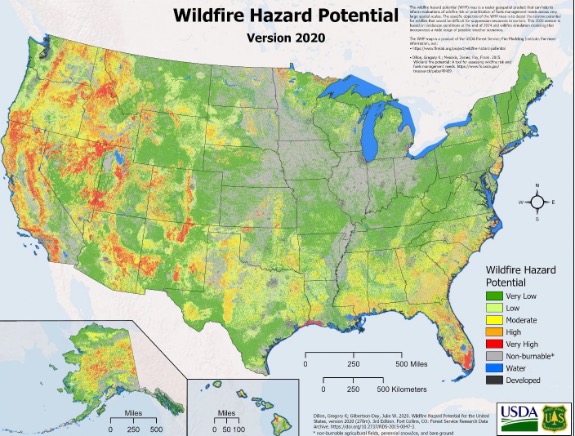
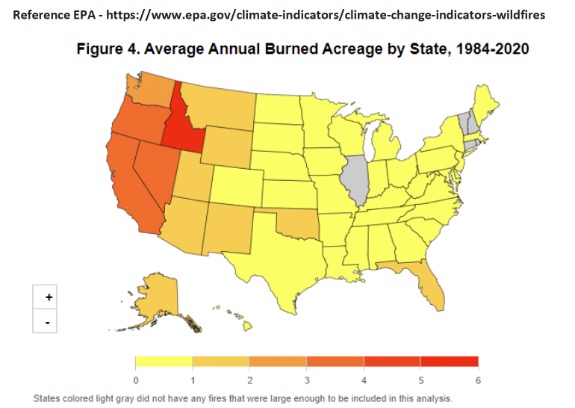
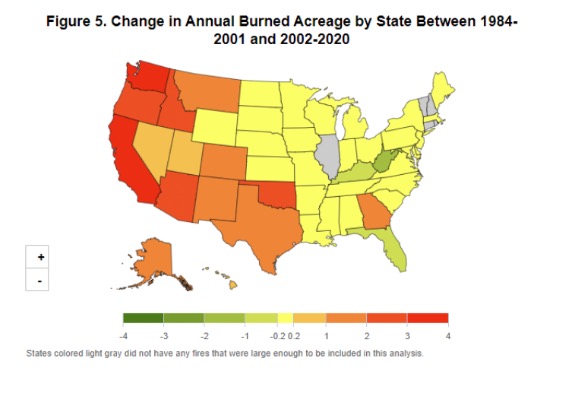
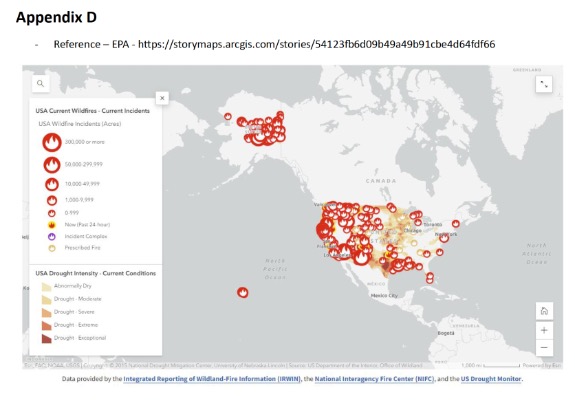
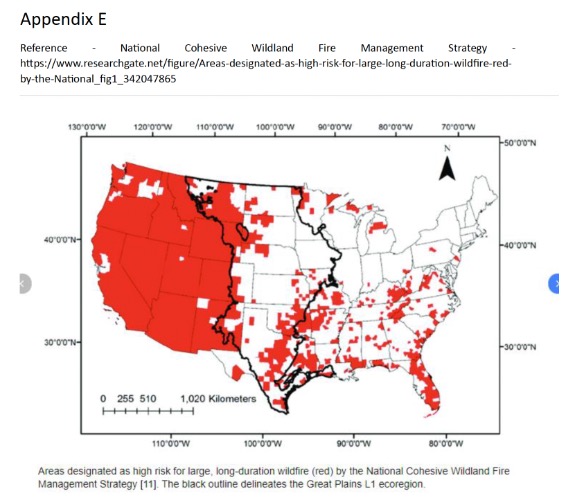
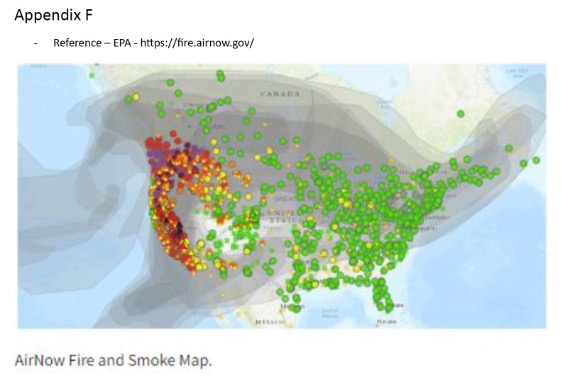
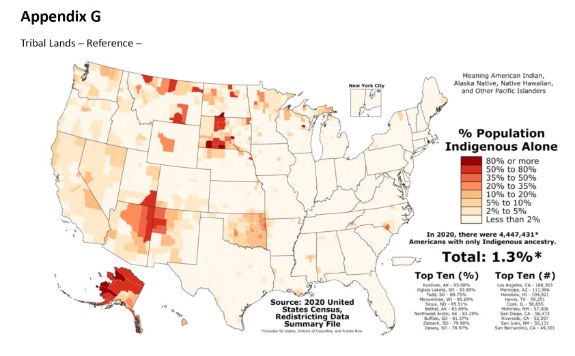
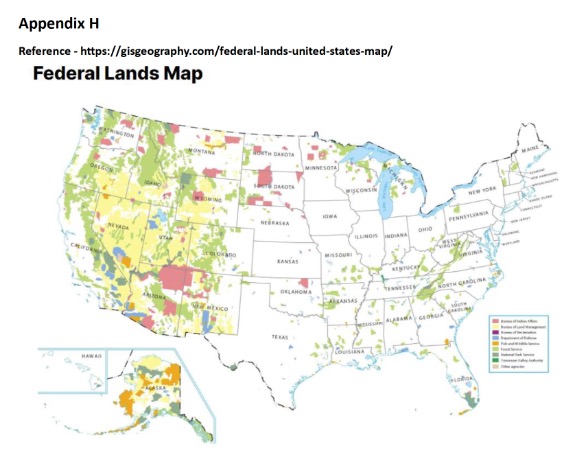
Appendix I
Residual Biomass to Biofuels
A Summary of Carbon Balance & Verification
Prepared by Stefan Unnasch and Anna Redmond, Life Cycle Associates, LLC
21 November 2023
Biomass Energy
Biomass resources offer a promising pathway to displace petroleum fuels and reduce greenhouse gas (GHG) emissions. The United States has a vast and diverse supply of biomass resources, including agricultural residues, forest residues, and municipal solid waste. These resources can be converted into biofuels, such as ethanol and biodiesel, or used to generate electricity and heat. The Billion Ton Study1
1 Langholtz, M. H. (2016). 2016 billion-ton report: advancing domestic resources for a thriving bioeconomy (No. DOE/EE-1440). EERE. conducted by the U.S. Department of Energy (DOE) assessed the potential availability of biomass for energy purposes in the United States, and concluded that it is feasible to produce one billion dry tons of biomass annually by 2030 without compromising food, feed, and fiber production. The Federal Renewable Fuel Standard (RFS) requires the production of cellulosic biofuels including feedstocks from forest and agricultural residues (EPA, 2023). The RFS sets annual volume requirements for cellulosic biofuels, which helps to promote the development and use of biomass energy technologies
The characteristics of biomass are an important aspect of a life cycle GHG assessment. Collection and processing inputs as well as the avoided fate of biomass affect the GHG footprint of biofuel pathways. Understanding these implications is essential for accurately representing the GHG emissions reductions associated with biofuel production and utilization. The GHG impact of each feedstock is contingent on its alternative fate. While some biomass categories may present challenges in defining their potential alternative fates, forest residues which have well-defined criteria for collection under the RFS. Crop and forest residues result in variety of baseline carbon conversion processes, such as decomposition, control burns, wildfires, and storage. Baseline historical data or existing certification must be verified to comply with GHG programs. Biomass residues can be converted to variety of finished biofuels, such as FT diesel and jet, renewable natural gas, and hydrogen. A more detailed description is available in a report by Life Cycle Associates2
2 https://www.dropbox.com/scl/fo/b98dqd5uahx3kr4d3dfj6/h?rlkey=18jq2wzfdmbjrai4ehqfi3q0i&dl=0 .
Biogenic Carbon Balance
Every year, over 100 billion metric tons of carbon dioxide (CO2) are exchanged between the atmosphere and terrestrial biomass3
3 IPCC, 2021: Chapter 5. In: Climate Change 2021: The Physical Science Basis. Contribution of Working Group I to the Sixth Assessment Report of the Intergovernmental Panel on Climate. . This exchange occurs through photosynthesis, respiration, decomposition, and combustion. Biomass residue feedstocks, such as agricultural waste and forest residues, would normally decompose or combust, releasing CO2 into the atmosphere. However, converting biomass residue into biofuels that can replace conventional transportation fuels can reduce overall amount of CO2 emissions to the atmosphere.
The carbon embodied in biomass is a result of photosynthesis and is often referred to as biogenic carbon. Biogenic carbon is absorbed by plants during photosynthesis and later released during decay or combustion. However, this approach depends on the timeframe for the carbon cycle. The timing of the growth and removal of biomass affects its net GHG emissions. The case of sustainably harvested residues represents a relatively simple variant with the broader category of biomass feedstocks. Biomass residues are not produced for the purpose of biofuel production, and thus the carbon sequestered during uptake would have occurred regardless of whether the biofuel system existed.
Figure 1. The Biogenic Carbon Cycle. Arrows are not drawn to scale.
Assessing the net GHG emissions of a biomass derived biofuel involves a comprehensive approach known as Life Cycle Assessment (LCA). LCA evaluates the environmental impact of a product or process across its entire life cycle, from the extraction of raw materials to its eventual disposal. Assessing the carbon intensity (CI) of biofuels begins by establishing baseline data and cataloging the energy and materials consumption of all involved processes, including carbon capture, transportation, storage, and monitoring. Life cycle GHG emissions correspond the net emissions released into the environment amortized over the amount of fuel produced.
In this case of forest residues, the growth of biomass results in the uptake of CO2 from the atmosphere and subsequent regrowth of biomass. The carbon is then the released as process emissions or carbon combusted in fuel. Carbon can also be stored either through CO2 sequestration, biochar, or other means
to result in a net sequestration (or carbon removal). Over a sufficiently long-time horizon, the growth and regrowth of crops over a range of harvest areas results in a net carbon neutral balance. Net increases or decreased in carbon storage depend on the details of the biomass harvesting system and alternative fate of the biomass feedstock4
4 Redmond, A. and S. Unnasch (2023). Residual Biomass to Biofuels Carbon Balance, Alternative Fate, & Verification. Life Cycle Associates Report LCA.8192.224.2023. . Requirements of the RFS result in a balance between biogenic uptake of CO2 and release from biofuel conversion and fuel use.
RFS Biomass Feedstocks
The RFS gives special consideration to fuels utilizing woody biomass as a feedstock. These considerations are meant to address the issues of alternative fate and indirect effects with eligibility criteria defined by EPA5
5 https://www.epa.gov/renewable-fuel-standard-program/biomass-tracking-renewable-fuel-standard-program . Woody biomass derived from ecologically sensitive or old growth forests is explicitly excluded from eligibility under the non-ecologically sensitive criterion and biomass residues. Under the RFS, slash is defined as the material left on the forest floor after logging operations or disturbances like storms or fires. It includes tree tops, branches, bark, and unmerchantable trees. Slash must be from an eligible source to qualify as renewable biomass. Pre-commercial thinnings involve removing trees to enhance the growth and quality of surrounding trees in a stand.
Verification Schemes for Biomass Residues
The use of waste biomass necessitates rigorous certification to ensure sustainability. To certify biomass as sustainable, fuel producers can use a variety of forest management verification schemes, such as the Sustainable Forestry Initiative (SFI), the Forest Stewardship Council (FSC), and the Roundtable on Sustainable Biomaterials (RSB). These programs are used internationally by a variety of stakeholders, including forest landowners, wood processors, and bioenergy producers, to demonstrate their commitment to sustainable forest management and meet the growing demand for sustainable wood products and bioenergy. The combination of requirements under the RFS and verification will assure that fuels produced from forest residues result in balance of removal and regrowth with a biogenic carbon balance.
Specifically, SFI is used in the United States, Canada, and China to certify forest management and fiber sourcing practices. FSC is used in over 80 countries to certify forest management and chain of custody practices. RSB is used in over 30 countries to certify the sustainable production and use of biomass.
SFI emphasizes standards, conservation, community, and education. It comprises 13 principles, 17 objectives, and additional performance metrics. SFI covers aspects such as forest management, fiber sourcing, and chain of custody. It promotes biodiversity conservation, environmental protection, and active community engagement.
FSC is an international NGO committed to upholding sustainable forest management. It operates on 10 principles and 57 distinct criteria. FSC offers two primary certification types: forest management and chain of custody. These certifications aim to strike a balance between environmental, social, and economic aspects in forestry.
RSB is a global initiative that promotes the sustainable production and use of biomass. It is guided by 12 well-defined principles that emphasize the environmental, social, and economic pillars of sustainability. Under RSB, forest residues must come from a sustainable forest management system (such as FSC or equivalent). RSB certification is one of the options for sustainable aviation fuels under CORSIA.
In addition to these forest management verification schemes, producers can also use other types of verification schemes, such as the International Sustainability and Carbon Certification (ISCC) and the USDA project for RFS biomass verification.
ISCC is a universal certification system for sectors such as agriculture, forestry, and waste management. It offers two certification variants: ISCC EU, with meticulous audit standards, and ISCC DE, which underscores the traceability of waste and residues. ISCC is majorly focused on conservation of biodiversity, strict adherence to Good Agricultural and Environmental Condition (GAEC) standards, and a commitment to uphold labor rights. ISCC certification is one of the options for sustainable aviation fuels under CORSIA.
Category: Top Stories














